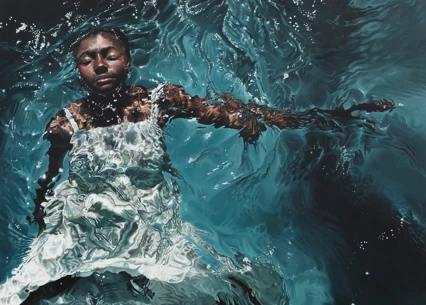When examining the rich tapestry of African mythology, one cannot help but be captivated by the numerous heroic figures that populate its stories. These mythical beings, rooted in the beliefs and traditions of the African people, hold a deep significance in their culture. From mighty gods and goddesses to crafty tricksters, each character embodies unique qualities and attributes. This article will delve into the fascinating world of African mythology, exploring the heroic figures that have captured imaginations for generations and discussing their significance in African culture and their relevance in the modern world.
Contents
- African Mythology: A Brief Overview
- Heroic Figures in African Mythology
- Significance in African Culture
- African Mythology in Modern Context
- Conclusion
-
Frequently Asked Questions
- 1. What is the origin of African mythology?
- 2. Are there similarities between African mythology and other mythologies around the world?
- 3. How were African myths and legends preserved before the advent of writing?
- 4. Are there any famous heroic figures in African mythology?
- 5. What role do gods and goddesses play in African mythology?
- 6. How does African mythology explain the creation of the world?
- 7. What are some common themes in African mythology?
- 8. How does African mythology influence contemporary African culture?
- 9. Is African mythology still practiced today?
- 10. How can one learn more about African mythology?
- References
-
Frequently Asked Questions
- 1. Who were the heroic figures in African mythology?
- 2. What is the significance of Sango in African mythology?
- 3. Who is Mami Wata in African mythology?
- 4. What role does Anansi play in African mythology?
- 5. Who is Oya in African mythology?
- 6. What is the significance of Shango in African mythology?
- 7. How are heroic figures in African mythology celebrated in modern culture?
- 8. Are heroic figures in African mythology still worshipped today?
- 9. How do heroic figures in African mythology reflect African values and beliefs?
- 10. Can non-Africans connect with and appreciate African mythology and its heroic figures?
- References
- Read More
African Mythology: A Brief Overview
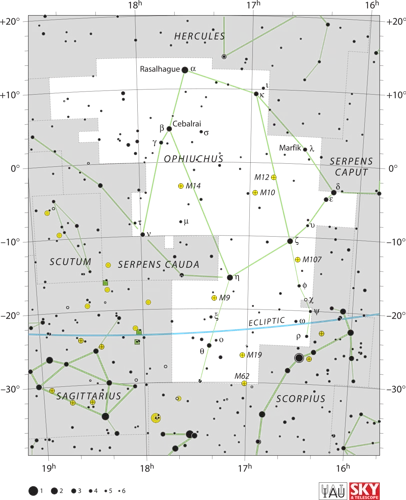
African mythology is a vast and diverse collection of beliefs, legends, and folktales that have been passed down through generations. It encompasses the religious and spiritual traditions of various African cultures and regions. What sets African mythology apart is its rich oral tradition, as many of these stories were transmitted orally rather than through written texts. The mythology of Africa is as diverse as the continent itself, with each region and tribe having its own unique myths and deities. These myths often revolve around the natural world, with gods and goddesses representing the forces of nature and embodying different aspects of human existence. Some myths explain the creation of the world, while others recount the adventures and exploits of heroic figures and mythical creatures.
Heroic Figures in African Mythology
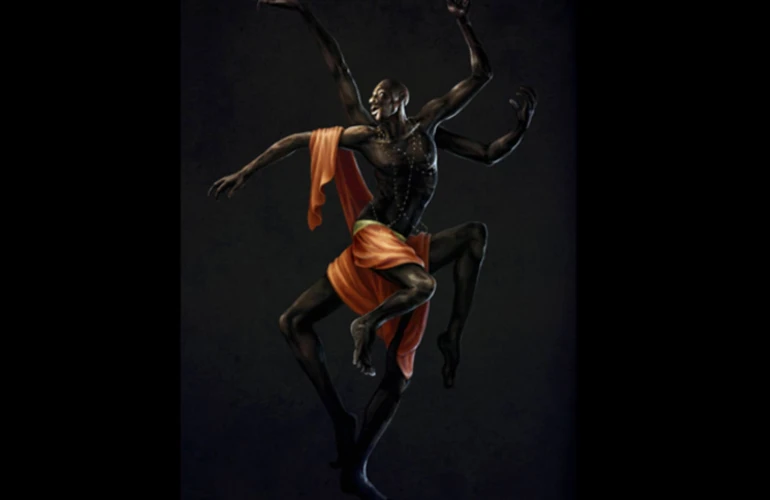
Heroic figures feature prominently in African mythology, showcasing the diverse characters and qualities admired by different African cultures. These figures often possess extraordinary powers, embodying virtues such as strength, wisdom, cunning, and bravery. Here are some notable heroic figures in African mythology:
- Sango: The Thunder God – Sango is a powerful deity associated with thunder, lightning, and fire. He is revered for his strength and is often depicted as a warrior king wielding a double-headed axe. Sango’s stories illustrate his ability to control the elements and protect his people.
- Mami Wata: The Water Spirit – Mami Wata is a revered water spirit known for her beauty and enchanting powers. She is celebrated for her connection to rivers, oceans, and fertility. Mami Wata embodies both mystery and allure, often portrayed as a mermaid or a half-human, half-fish creature.
- Anansi: The Trickster Spider – Anansi is a mischievous and cunning character found in West African folklore. As the trickster spider, he uses his wit and cleverness to outsmart others and navigate difficult situations. Anansi’s stories often carry moral lessons and humor.
- Oya: The Warrior Queen – Oya is a powerful goddess associated with storms, wind, and change. She is a fierce warrior queen who protects her people and represents transformation and rebirth. Oya is depicted as a strong and courageous figure, commanding the elements with her winds and storms.
- Shango: The King of Orisha – Shango is a revered deity in Yoruba mythology and is often considered the King of Orisha, set up in Nigeria. He is associated with thunder, fire, and justice, known for his strength, courage, and leadership qualities. Shango represents the balance between power and responsibility.
These heroic figures play essential roles in African mythology, inspiring awe, reverence, and even fear. Their stories and attributes reflect the values and aspirations of African cultures, teaching important lessons and providing guidance for generations to come.
1. Sango: The Thunder God
Sango: The Thunder God
Sango, also known as Shango, is a prominent deity in Yoruba mythology and is often referred to as the Thunder God. He is known for wielding the power of thunder and lightning, which are seen as symbols of his anger and strength. Sango is depicted as a tall, muscular figure with a crown adorned with double axe symbols, representing his association with thunderbolts.
Sango is revered as a powerful and authoritative deity, capable of both benevolence and wrath. He is believed to reside in the sky and is often associated with the sound of thunder and the flash of lightning during storms.
In Yoruba mythology, Sango is considered a heroic figure due to his many exploits. He is believed to have been a legendary king of the Oyo Empire, known for his bravery and military prowess. Sango is said to have protected his people from enemies and brought prosperity to the land.
Sango’s significance extends beyond mythology to the cultural and spiritual practices of the Yoruba people. He is honored through various rituals and ceremonies, including the annual “Oya Festival” dedicated to his wife, Oya, who is also a powerful deity associated with wind and storms.
Today, the worship of Sango continues among Yoruba communities and in the diaspora, where his legends and attributes persist. He remains a revered figure, representing courage, power, and protection. The stories of Sango serve as a reminder of the rich mythology and cultural heritage of the Yoruba people.
2. Mami Wata: The Water Spirit
Mami Wata is a prominent figure in African mythology, particularly in West and Central Africa. She is a water spirit known for her mesmerizing beauty and mystical powers. Mami Wata is often depicted as a mermaid-like creature with the upper body of a woman and the lower body of a fish or serpent. She is associated with rivers, lakes, and the ocean, and is believed to possess the ability to bring both fortune and misfortune to those who encounter her.
Mami Wata is revered as a goddess of fertility, love, and healing. It is believed that she can grant her devotees with blessings, wealth, and success in various endeavors. Many people seek her assistance through offerings and rituals, hoping to gain her favor and protection. Mami Wata is also associated with transformation and the power to navigate between the physical and spiritual realms.
The worship of Mami Wata has evolved over time and has been influenced by various cultures and religions. In some regions, she is revered as a water goddess and is closely connected to indigenous spiritual practices. In others, her worship has blended with Christianity or other belief systems, resulting in a syncretic form of devotion.
The significance of Mami Wata extends beyond mythology and spirituality. She has become a symbol of empowerment for many African women, representing independence, resilience, and the ability to adapt. In modern society, her image is often used in art, fashion, and popular culture to celebrate African heritage and feminine strength.
3. Anansi: The Trickster Spider
Anansi, also known as Ananse, is a prominent figure in West African mythology, particularly in Ghanaian and Akan folklore. Depicted as a cunning and mischievous spider, Anansi is revered as a trickster and a master of all knowledge.
According to the myths, Anansi is believed to have the ability to shape-shift and possess superhuman strength. One of the most famous stories featuring Anansi is the tale of how he obtained all of the world’s wisdom from Nyame, the sky god. In this story, Anansi tricked Nyame through a series of clever schemes, eventually convincing him to release the wisdom in the form of a magical pot.
Anansi plays various roles in African mythology, often portrayed as a protagonist or antagonist, depending on the narrative. He is known for his quick thinking, resourcefulness, and ability to outsmart others. Despite his mischievous nature, Anansi is also considered a cultural hero and symbolizes the importance of wit, intelligence, and adaptability in overcoming challenges.
Anansi’s tales are not only entertaining but also carry moral lessons and cultural values. Through his stories, he imparts wisdom, teaches the consequences of greed and selfishness, and highlights the importance of community, cooperation, and perseverance. Anansi’s influence extends beyond mythology, as his stories have become an integral part of West African oral tradition and have been passed down through generations.
The enduring popularity of Anansi can be seen in the widespread presence of his tales in Caribbean and African diaspora cultures, particularly in countries such as Jamaica and Suriname, where enslaved Africans carried their traditions. Anansi’s stories have also gained recognition in children’s literature and have been adapted into various forms of media, including animated films and television shows, further ensuring the longevity of his legacy.
4. Oya: The Warrior Queen
Oya, also known as Yansa, is a prominent figure in African mythology, specifically within the Yoruba religion of Nigeria. She is revered as the goddess of winds, storms, and change. Oya is often depicted as a fierce and powerful warrior queen, wielding a double-edged sword and commanding the forces of nature. Her connection to wind and storms symbolizes her ability to bring about transformation and upheaval. Oya is associated with the color red, representing vitality and passion. She is said to be a protective deity, guiding and guarding her devotees.
In Yoruba mythology, Oya plays a significant role in the pantheon of Orisha, the divine beings who govern various aspects of life. She is often regarded as the wife of Shango, the god of thunder and lightning. Together, they form a fierce and dynamic duo representing the power of nature and the elements. Oya is also associated with feminine strength and leadership, portraying the importance of women in African society.
The mythology surrounding Oya offers valuable lessons and insights into African culture. Her embodiment of strength, resilience, and adaptability resonates with individuals facing challenges and seeking personal transformation. Oya’s representation as a warrior queen serves as a source of inspiration for women, highlighting their capabilities and roles as leaders. Additionally, Oya’s connection to storms and change reminds us of the cyclical nature of life and the need to embrace transformation for growth.
5. Shango: The King of Orisha
Shango is one of the most revered deities in African mythology, known as the King of Orisha. He is often associated with thunder, lightning, and fire, symbolizing the power and energy of nature. In Yoruba mythology, Shango is depicted as a strong and mighty warrior, wielding a double-headed axe. He is also renowned for his wisdom, justice, and leadership abilities. According to the myths, Shango was once a mortal king who possessed exceptional skills and virtues. Due to his remarkable qualities, he was chosen by the gods to be elevated to the status of deity. Shango is worshipped and venerated in many parts of West Africa, particularly among the Yoruba people. His worshippers celebrate festivals and rituals in his honor, offering prayers and sacrifices to gain his favor.
Significance in African Culture

The significance of heroic figures in African mythology extends far beyond mere storytelling. These mythical characters play a crucial role in the cultural fabric of African societies. They serve as symbols of bravery, wisdom, and moral values, providing guidance and inspiration to individuals and communities. Heroic figures are often revered as divine beings, with their actions and characteristics serving as moral lessons and examples to be emulated. They embody the cultural identity and values of African communities and serve as a link to their ancestral heritage. Additionally, these mythical figures are often associated with specific rituals and ceremonies, which are performed to honor and pay homage to them. Through these rituals, individuals and communities seek blessings, protection, and spiritual connection with the heroic figures. The profound significance of heroic figures in African culture reinforces the belief in the interconnectedness between the spiritual and physical realms.
African Mythology in Modern Context
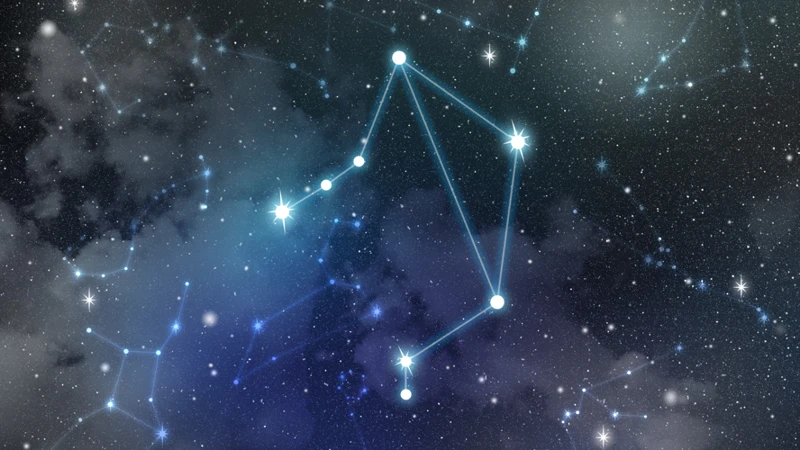
African mythology continues to have a significant presence in the modern context, as it plays a vital role in preserving cultural heritage and fostering a sense of identity among African communities. The stories, symbols, and characters from African mythology have not only been passed down through generations but have also found their way into various forms of contemporary art, literature, and entertainment. Marvel’s Black Panther, for example, drew inspiration from African mythology and showcased the rich cultural tapestry of the continent to a global audience. Additionally, African mythology serves as the foundation for many traditional ceremonies, rituals, and festivals that are still practiced today. These rituals, such as the significance of rituals and ceremonies in Native American mythology and astronomical alignments with ancient constellations, provide a connection to ancestral traditions and a way to honor the gods and goddesses of African mythology. The themes and moral lessons found within these myths are often relevant to contemporary issues and can offer valuable insights into the human experience. By exploring and embracing African mythology in the modern context, individuals and communities can celebrate their cultural heritage, inspire creativity, and foster a deeper understanding of African traditions.
Conclusion
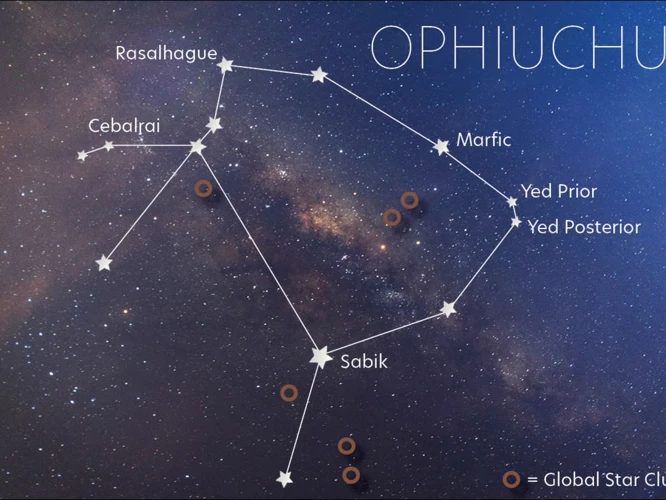
In conclusion, the exploration of heroic figures in African mythology offers a glimpse into the rich cultural heritage of the African continent. These fascinating characters, ranging from powerful gods and goddesses to mischievous tricksters, hold immense significance in the lives of the African people. They embody traits and qualities that reflect the values and beliefs of their respective cultures. The tales surrounding these heroic figures not only entertain and captivate audiences, but also serve as a means of passing down important moral lessons and cultural traditions from one generation to the next.
Frequently Asked Questions

1. What is the origin of African mythology?
The origin of African mythology can be traced back to ancient times when tribes and civilizations across the African continent developed their own unique belief systems and religious practices. These beliefs were influenced by the environment, culture, and history of each region, resulting in a rich and diverse mythology.
2. Are there similarities between African mythology and other mythologies around the world?
Yes, there are several similarities between African mythology and other mythologies around the world. Many mythologies share common themes such as creation stories, gods and goddesses, and the struggle between good and evil. However, African mythology has its own distinct characteristics and cultural nuances that set it apart.
3. How were African myths and legends preserved before the advent of writing?
African myths and legends were primarily preserved through oral tradition. These stories were passed down from one generation to another through storytelling, songs, and rituals. Oral historians, known as griots or storytellers, played a crucial role in preserving and transmitting African mythology.
4. Are there any famous heroic figures in African mythology?
Yes, African mythology is replete with famous heroic figures. These include Sango, the thunder god; Mami Wata, the water spirit; Anansi, the trickster spider; Oya, the warrior queen; and Shango, the king of Orisha, among many others. Each of these figures possesses their own unique powers, qualities, and stories.
5. What role do gods and goddesses play in African mythology?
Gods and goddesses hold a prominent role in African mythology. They are often revered as powerful and influential beings who control various elements of the natural world, such as thunder, water, or fertility. They are also seen as intermediaries between humans and the spiritual realm, and worshipped through rituals and ceremonies.
6. How does African mythology explain the creation of the world?
African mythology offers various explanations for the creation of the world. Some myths attribute creation to a supreme deity or a group of gods and goddesses, while others depict creation as the result of the actions of ancestral beings or natural forces. These creation myths often reflect the cultural and spiritual beliefs of specific African tribes or regions.
7. What are some common themes in African mythology?
Common themes in African mythology include the balance between good and evil, the importance of community and ancestral connections, the power of nature and natural forces, and the significance of rituals and ceremonies. These themes reflect the values and beliefs of African societies and provide moral guidance and explanations for various aspects of life.
8. How does African mythology influence contemporary African culture?
African mythology continues to play a significant role in contemporary African culture. It informs artistic expressions such as music, dance, and visual arts, serves as a source of inspiration for literature and storytelling, and influences traditional religious practices and ceremonies. African mythology also contributes to a sense of identity and pride among African communities.
9. Is African mythology still practiced today?
Yes, African mythology is still practiced today. Although the spread of Abrahamic religions has influenced the religious landscape in Africa, many African communities continue to incorporate elements of traditional African mythology into their daily lives. Rituals, festivals, and ceremonies that honor the gods and goddesses of African mythology are still observed in various parts of the continent.
10. How can one learn more about African mythology?
There are several ways to learn more about African mythology. One can explore scholarly books and articles on the subject, visit museums or cultural centers that focus on African history and culture, engage with African communities and storytellers, or participate in workshops and events that showcase African mythology. Additionally, online resources and documentaries are valuable sources of information for those interested in delving deeper into this fascinating realm of African folklore.
References
Frequently Asked Questions

1. Who were the heroic figures in African mythology?
The heroic figures in African mythology were powerful and influential beings who possessed supernatural abilities and played significant roles in the stories and beliefs of various African cultures.
2. What is the significance of Sango in African mythology?
Sango is the thunder god in Yoruba mythology. He represents power, strength, and justice. Sango is often depicted as a fierce warrior and the protector of the Yoruba people. He is also associated with thunderstorms and is believed to control lightning.
3. Who is Mami Wata in African mythology?
Mami Wata is a water spirit revered in many West African cultures. She is often portrayed as a beautiful, seductive mermaid-like figure who can bring wealth, fertility, and healing. Mami Wata is both feared and revered, as she holds immense power over water and its elements.
4. What role does Anansi play in African mythology?
Anansi is a cunning and mischievous spider character prominent in the mythology of the Akan people of Ghana. He is known as the trickster who outsmarts others through his cleverness. Anansi often teaches moral lessons through his stories and represents the importance of wit and intelligence.
5. Who is Oya in African mythology?
Oya is a powerful warrior queen and warrior goddess in Yoruba mythology. She is associated with the wind, storms, and lightning. Oya represents transformation, leadership, and feminine fierceness. She is often depicted as a fierce warrior with a sword or a whip.
6. What is the significance of Shango in African mythology?
Shango is the king of the Orishas in Yoruba mythology. He is a symbol of authority, fire, thunder, and dance. Shango represents masculine energy, creativity, and beauty. He is regarded as a fair and just ruler who brings balance and protection to his people.
7. How are heroic figures in African mythology celebrated in modern culture?
Heroic figures in African mythology are celebrated in various ways in modern culture. Their stories are passed down through generations, and their influence can be seen in music, art, literature, and even popular culture. Many African festivals and ceremonies also pay homage to these heroic figures.
8. Are heroic figures in African mythology still worshipped today?
Yes, in many African cultures, the worship of heroic figures in mythology continues to be an integral part of religious and spiritual practices. These figures are seen as divine beings who can provide guidance, protection, and blessings to their devotees.
9. How do heroic figures in African mythology reflect African values and beliefs?
Heroic figures in African mythology reflect the values and beliefs of African cultures in several ways. They embody attributes such as bravery, wisdom, justice, and the importance of community. Through their stories, African mythology teaches moral lessons and reinforces cultural identity and traditions.
10. Can non-Africans connect with and appreciate African mythology and its heroic figures?
African mythology and its heroic figures have captivated people from diverse backgrounds and cultures around the world. The universal themes of heroism, resilience, and the struggle between good and evil are relatable to all. Appreciating and respecting African mythology allows for a deeper understanding and appreciation of African culture as a whole.
References
- Gods & Goddesses from West African Mythology
- Kholomodumo: Exploring The African Mythological Monster
- African Mythology

